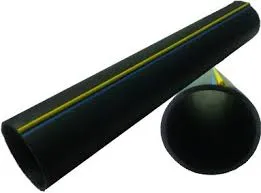Aug . 01, 2024 14:39 Back to list
Five Things You Need to Know About HDPE Pipe
Five Things You Need to Know About HDPE Pipe
Learn about how a polymer supplier can help converters optimize their HDPE pipe production and usage.
we want to build (Real)ationships by making sure we’re more than just a polymer supplier. We also want to be a converter’s knowledgeable friend who shares insights on things that help grow your business.
Take, for example, the market for pipes made of high-density polyethylene (HDPE Resin). It’s booming. Let’s look at five things converters need to know about HDPE pipe, the growth opportunities in this sector, and how your polymer supplier can enable those opportunities.
HDPE Pipe is In Demand
When you think of pipes, what may first come to mind are more traditional materials like copper, ductile iron, concrete, or clay. But the future of pipe is being driven by HDPE – and for good reasons. The durability, sustainability, flexibility, chemical and corrosion resistance, light weight, affordability, and robust properties of HDPE plastic has made it a prime choice for a wide array of HDPE pipe applications in:
- Oil and gas
- Water and wastewater infrastructure
- Residential construction and agricultural sectors
As a result, Transparency Market Research estimates the global HDPE pipe market to expand at a CAGR of around 6% from 2020 to 2030.1 The global HDPE pipe market is expected to be valued at $32.7 billion by 2030.2 Helping fuel that growth is increasing demand for pipeline infrastructure in oil and gas exploration activities.
HDPE water supply pipe
Further driving HDPE pipe demand is renewed focus and funding for infrastructure in the coming years, as our societal underpinnings continue to age. There is an excellent opportunity in this sector, as underground infrastructure is experiencing a water main break every two minutes.4
HDPE Plastic is Strong & Durable
HDPE plastic is known for its high resistances and a longer life expectancy than clay, steel, ductile iron, or copper when it comes to piping. It also offers resistance to corrosion, bacteria, and chemical buildup. In fact, HDPE pipes are mainly used in the oil and gas industries due to their ability to withstand high corrosion resistivity and zero reactive properties, and long service periods.5
HDPE pipe is also resistant to temperature changes, rain and wind, load changes (such as water hammer, a pressure wave caused when a liquid or gas is forced to stop or change direction suddenly), and expanding or contracting soils. It won’t break when water in the lines freezes and can withstand and even dampen shock waves more than other pipe materials. That makes it well-suited for rugged and changing environments.
-
PVC Grey Sheet for Extraction: Chemical Resistant & Durable
NewsAug.19,2025
-
Durable PVC Pipe Fittings for Plumbing & Irrigation Needs
NewsAug.18,2025
-
HDPE Steel Belt Reinforced Spiral Corrugated Pipe | High Strength
NewsAug.17,2025
-
HDPE Pipe Fittings: Durable, Leak-Proof Solutions
NewsAug.16,2025
-
Premium CPVC Sheet: High-Temp & Chemical Resistant Solutions
NewsAug.15,2025
-
Durable PPR Pipe for Hot & Cold Water Systems - Easy Install
NewsAug.14,2025


